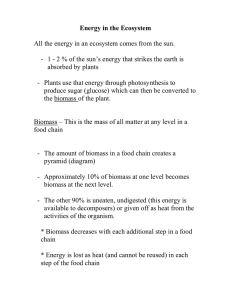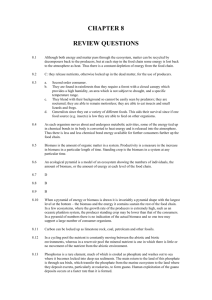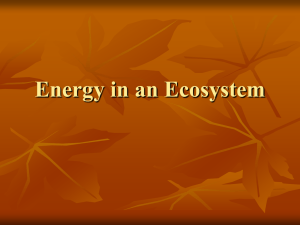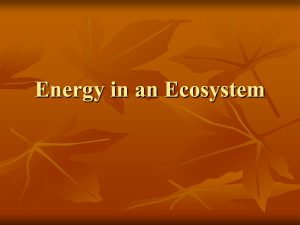Energy in the Ecosystem
advertisement
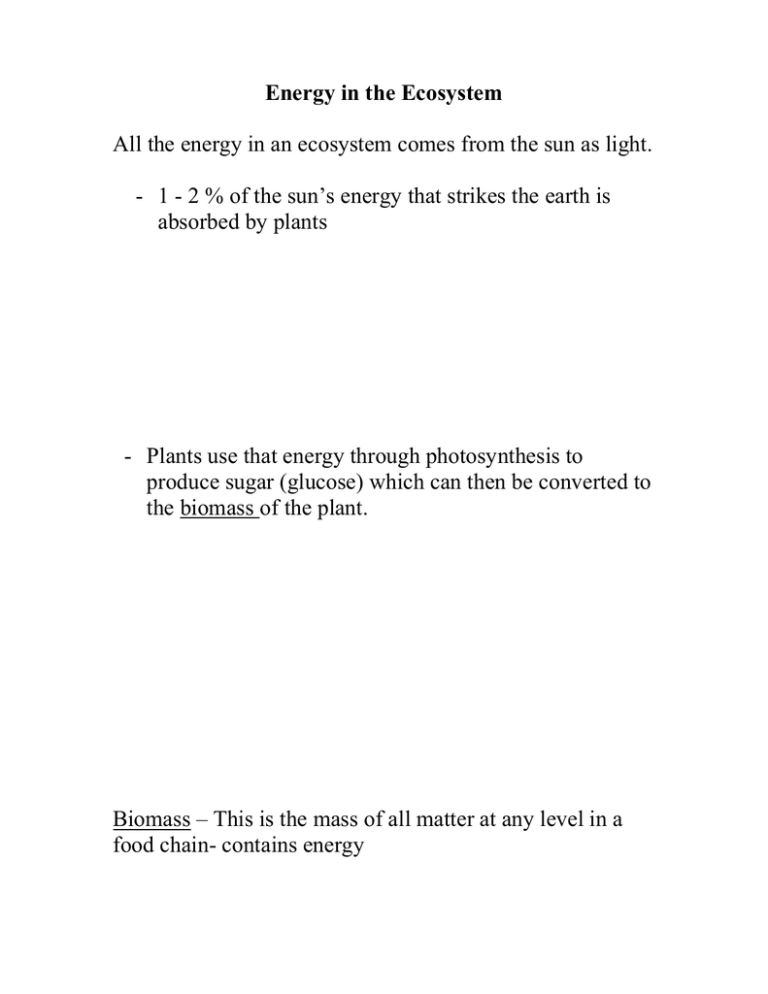
Energy in the Ecosystem All the energy in an ecosystem comes from the sun as light. - 1 - 2 % of the sun’s energy that strikes the earth is absorbed by plants - Plants use that energy through photosynthesis to produce sugar (glucose) which can then be converted to the biomass of the plant. Biomass – This is the mass of all matter at any level in a food chain- contains energy - The amount of biomass in a food chain creates a pyramid (diagram) - Approximately 10% of biomass at one level becomes biomass at the next level. - The other 90% is 1) uneaten, 2) undigested (this energy is available to decomposers) or given off as 3) heat from the activities of the organism. * Biomass decreases with each additional step in a food chain * Energy is lost as heat (and cannot be reused) in each step of the food chain Number Pyramid – This is a pyramid showing that a large number of organisms (see primary productivity) are required at the base of the food chain (there are exceptions) to support a small number of organisms at the top. Primary productivity – The amount of biomass produced by plants in an ecosystem. - More organisms can be supported if the food chain is shortened – skip levels (more biomass available)

